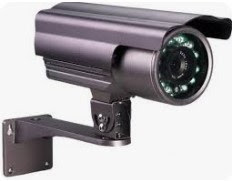Installation of IP CCTV camera system using a single Power over Ethernet (PoE) switch for remote viewing on your phone involves several steps. Here's a general guide to help you set up your system:
Materials Needed:
1. IP CCTV cameras with PoE support
2. PoE switch
3. Ethernet cables
4. NVR (Network Video Recorder) or a compatible software
solution
5. Router with internet connectivity
6. Smartphone with a compatible app for remote viewing
Step 1: Plan Your Camera Placement:
Ø Determine where
you want to install your cameras for optimal coverage.
Ø Ensure the
chosen locations have access to power outlets or are suitable for PoE
installation.
Step 2: Connect Cameras to PoE Switch:
Ø Connect each IP
CCTV camera to the PoE switch using Ethernet cables. Make sure to use cables of
appropriate length.
Ø The PoE switch
will provide power and transmit data to the cameras over a single cable.
Step 3: Connect PoE Switch to NVR or Router:
Ø Connect the PoE
switch to the NVR or directly to your router using an Ethernet cable.
Ø If using an NVR,
connect it to the router as well.
Step 4: Configure IP Addresses:
Ø Access the
camera settings through a web browser by typing each camera's IP address into
the address bar.
Ø Assign each
camera a unique IP address within your network.
Ø Note down the IP
addresses for future reference.
Step 5: Configure NVR (if applicable):
Ø If using an NVR,
configure it to recognize and record footage from the connected cameras.
Ø Follow the
manufacturer's instructions for setting up the NVR.
Step 6: Install Mobile App:
Download and install
the mobile app provided by the camera or NVR manufacturer on your smartphone.
Step 7: Configure Remote Access:
- Enable port
forwarding on your router to allow remote access to the NVR or cameras.
Configure the mobile
app with the necessary information, such as your external IP address and port
number.
Step 8: Test Remote Viewing:
- Open the mobile
app on your smartphone and log in using the provided credentials.
Verify that you can
view the live feed from your cameras remotely.
Tips:
Ensure your router has a static external IP
address or use Dynamic DNS (DDNS) for easier remote access.
Follow security best practices, such as using
strong passwords for cameras and the NVR, and keeping firmware up-to-date.









0 Comments